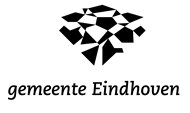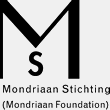Jul 29th, 2007 by Kerstin Niemann | No Comments »
Driving around in some New Orleans neighborhoods make you realize what you have not seen in the last two years if you had not been specifically aware of it. It is difficult to frame it in words, something like „the ongoing disaster†or „ghost neighborhoods“. Even the usage of the word neighborhood is not appropriate; there is no neighborhood anymore. The social structures of a neighborhood have been flooded away, such as health care centers, schooling, the little corner store, and public meeting opportunities or the sheer presence of your neighbors. Everything is so scattered. Dawn Dedeaux, a New Orleans based artist, was so nice to give us an introduction into the post-Katrina syndrome of the city of New Orleans. Frustration, the lack of money and resources as well as the given social conditions hinder a large population from re-establishing or let’s say reclaiming their own neighborhood.
When you talk to people about the development of the city they are not talking about a new start, a great chance for a utopian model of living that may come into being. Sharing, collaborations and social work become important parts of the healing process of this city. Nevertheless driving outside the city you will get to see large billboards advertising the „Next generation homes“. That reminds of the idea of “Second Life†which is among others a tool to implement another identity, maybe also to skip the current situation…
Posted in All Posts, Research Travels | No Comments »
Jul 28th, 2007 by Charles Esche | No Comments »
This morning we will set off to Alabama. The tour of Katrina devastation shook Otto and Kerstin a bit. People moving back into areas with no facilities expect the house itself - no shops, no schools….
We will visit an artist, Clayton Colvin, in Mobile, Alabama and then try to get as far as Birmingham where the Civil Rights Movement began. The road trip starts here…
Posted in All Posts, Research Travels | No Comments »
Jul 28th, 2007 by Otto Berchem | No Comments »

Charles in conversation with Willie Birch.

Kerstin and Dawn DeDeaux.
Continue Reading »
Posted in All Posts, Artists In Residence, Research Travels | No Comments »
Jul 28th, 2007 by Charles Esche | 1 Comment »
“…when we had been in New York for a week and had begun, as we thought, to understand America. We were suddenly and unexpectedly told that New York isn’t America at all. We were told that New York is a bridge between Europe and America and that we were still just on the bridge.
Then we went to Washington, being firmly convinced that the capital of the United States would, undoubtedly, be America. However, that very evening we were told that on no account could Washington be considered America. It is a city of government clerks, while America is something completely different.
Bewildered, we went to Hartford, CT, where the great American writer Mark Twain spent his mature years. Much to our horror, the locals announced in unison that Hartford isn’t exactly the real America either. They couldn’t say for certain where the actually America is located. Some said that the real America is in the southern states, while others maintained that it is the western ones. A few didn’t say anything at all – they just pointed their fingers vaguely into space†(Ilya Ilf and Evgeny Petrov, Ilf and Petrov’s American Road Trip, Canbinet Books, New York, 2007)
This was written in 1935 by two Soviet journalists reporting on the USA for Pravda. I read it on the plane going across the Atlantic Ocean. It helped to confirm our sense of confusion of our resercah trip, and it’s quest like character.
The first day is spent in NY (which is not America) and includes a visit to Matthew Day Jackson, an artist who has travelled around the United States, and who has a sense of the occupation patterns of this country before and after the white people arrived. He is making a skeleton from recycled materials. It looks a bit like the folk art in the Museum of American Folk Art we visit to try to understand the difference between Folk and Real Art because we understand naively that this will be an issue where we are going. The visit is inspiring but it didn’t help answer this question. Matthew doesn’t know the difference and thinks they are all artists anyway. But the Museum of Modern Art next door to the Folk Art Museum is 20 time busier and 100 times richer. Maybe that’s it.
A day later, the three of us arrive late at night in New Orleans to start this research trip along and around the Mississippi River for real. We wake up on the third morning and went to visit a wonderfully warm and talented artist Willy Birch. A New Orleanian by birth whose first words to us were….â€if you compare us to the United States, this place is very differentâ€. But we were in the United States, I said. “Yes and no†said Willy, “this place has more to do with Cuba, Haiti, the Caribbean.â€
…And so it has proved so far…
Continue Reading »
Posted in All Posts, Research Travels | 1 Comment »






